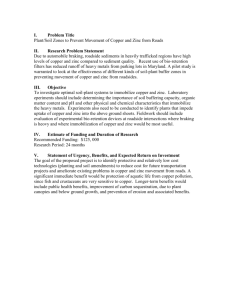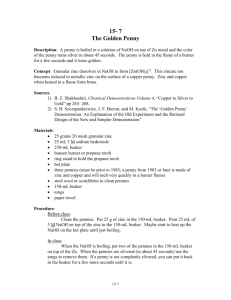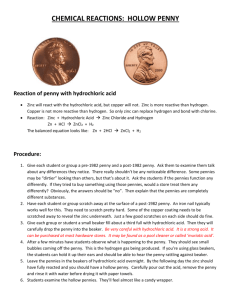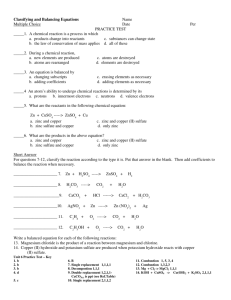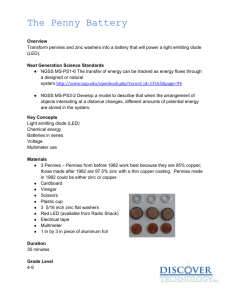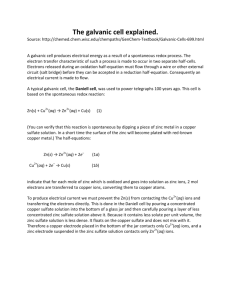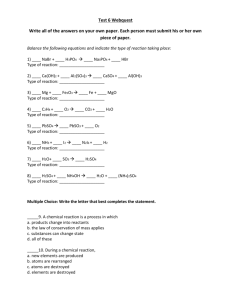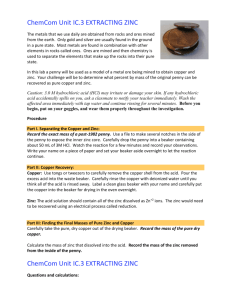Report Form: Electrochemistry
advertisement
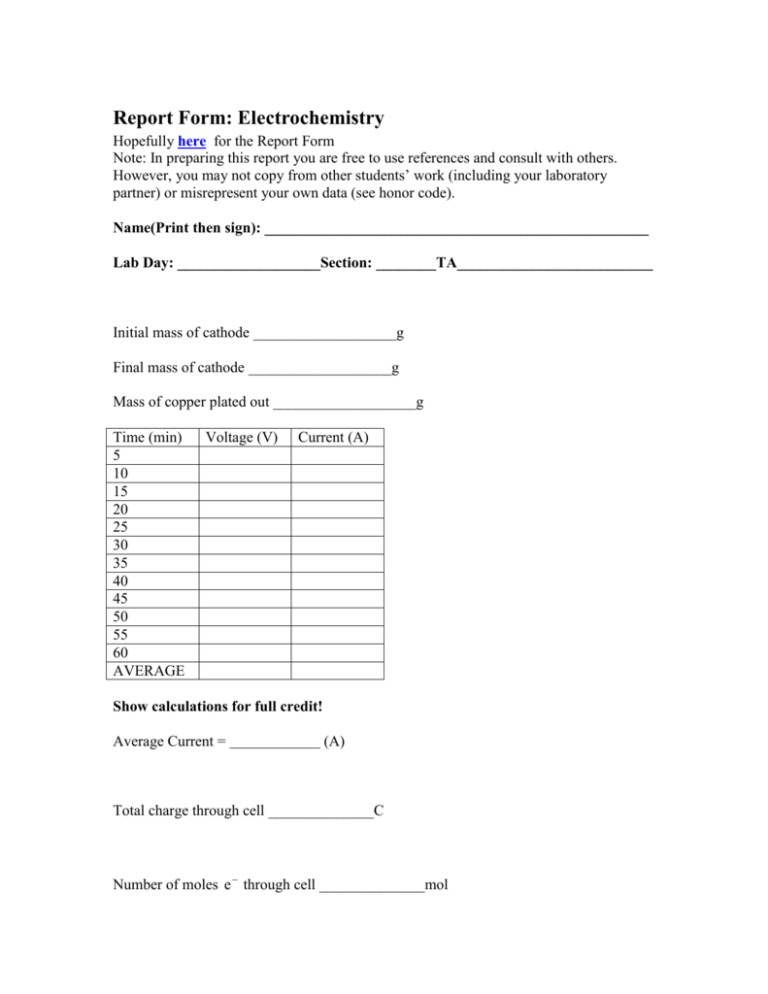
Report Form: Electrochemistry Hopefully here for the Report Form Note: In preparing this report you are free to use references and consult with others. However, you may not copy from other students’ work (including your laboratory partner) or misrepresent your own data (see honor code). Name(Print then sign): ___________________________________________________ Lab Day: ___________________Section: ________TA__________________________ Initial mass of cathode ___________________g Final mass of cathode ___________________g Mass of copper plated out ___________________g Time (min) 5 10 15 20 25 30 35 40 45 50 55 60 AVERAGE Voltage (V) Current (A) Show calculations for full credit! Average Current = (A) Total charge through cell ______________C Number of moles e through cell ______________mol Molar mass of copper ______________g/mol Questions: 1. What is oxidized and what is reduced when electroplating copper? 2. Write the half reactions that occur at the anode and cathode. 3. Why is it important not to touch the cleaned cathode? 4. What is the purpose of KNO3 in this experiment? 5. Would the current change if hydrogen gas were also observed at the cathode, explain your answer? 6. What part of this procedure limits the accuracy of the molar mass determination? Alchemy - Copper into gold 1. Is this reaction an oxidation-reduction reaction? Explain your answer. 2. Why did the penny turn "silver"? 3. Why did it turn "gold"? 4. Why did we heat the penny to turn it "gold"? The Golden Penny Experiment General Observations 1. What happens to pennies resting in contact with the 30- mesh zinc on the bottom of the beaker? 2. What happens to pennies resting on the bottom of the beaker but not in contact with zinc? 3. What happens to a copper penny soldered to copper wire and immersed in solution when the copper wire is not in contact with zinc metal? 4. What happens to a penny soldered to copper wire, suspended in solution when the other end of the copper wire is soldered to a strip of zinc metal which is in turn touching the 30-mesh zinc? 5. Do you observe the evolution of any gas from the 30-mesh zinc in 1 M NaOH which might come from the following reaction: Zn 2H 2 O 2OH H 2 (g) Zn (OH) 24 ? 6. Does the zinc powder react with 1 M NaOH to form a gas? 7. Is there voltage difference between a strip of zinc metal and the free end of a copper wire soldered to a penny when both the zinc strip and penny are immersed in solution? 8. If there is a voltage difference, which is the negative electrode (the electrode source)? The copper wire soldered to the penny? Or the strip of zinc metal? 9. If there is a voltage difference, do it remain constant? Or does it change with time? Consider this Constructing an hypothesis to explain the whole process: copper to silver to gold color. 1. What do you think makes up the silver-colored coating on the penny? Does it behave in any ways similar to zinc metal? 2. If we assume the silvered-colored coating is zinc metal, how do you think the atoms of zinc get from the 30-mesh zinc to the copper penny? By diffusing from the zinc metal to the penny? Or through the solution? 3. If the zinc that coats the copper penny comes from the solution, is the zinc in solution more likely to be in the form of Zn atoms or Zn 2 ions? Explain your answer. 4. If you analyzed the solution at the end of the experiment, would you expect to find zinc ions (or Zn[OH]24 complex ions) in solution? If so, by what chemical (or electrochemical) reaction could they have been formed? 5. When the silver-plated pennies are heated on the hot plate, they turn a golden color, which is the color of brass, a copper-zinc alloy. Explain how heating could promote the formation of an alloy and cause a color change from silver to gold. 6. Summarize the key observations and your hypothesis for explaining the whole process by which a copper penny acquires a shiny gold color? Hint:Write the half reactions then explain what is happening.
